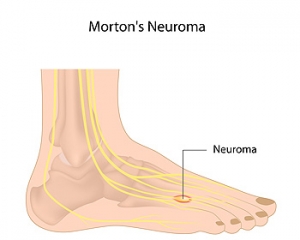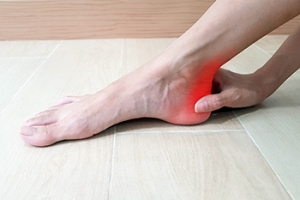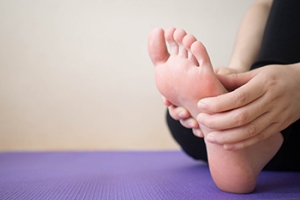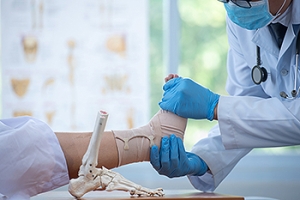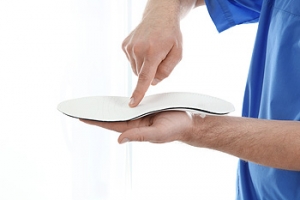Super User
Foot Injury From Playing Baseball

Baseball is a dynamic sport that requires players to engage in varied physical activities such as sprinting to bases, batting, throwing, and pitching. Players often experience rapid changes in movement, from running in straight sprints to shifting side to side while taking leads or fielding. Stability is vital, particularly in the lower body, to manage the force from these movements. The right foot is especially important due to its frequent contact with the base corners while running. Sliding injuries are common, with feet-first slides presenting a higher injury rate than head-first ones. Most injuries from sliding are minor, although some can sideline players for over a week. The introduction of breakaway bases has helped reduce such injuries. Pitchers need shoes with rigid soles for effective push-off, while catchers require flexibility in the forefoot due to their crouched position. All foot types, whether arched or flat, can adapt to the sport. Baseball injuries can vary, but a comprehensive approach to treatment includes a full history and physical exam, including an assessment of the player's shoes and gait. If you have endured a baseball foot injury, it is suggested that you make an appointment with a podiatrist for a proper diagnosis and treatment plan.
Sports related foot and ankle injuries require proper treatment before players can go back to their regular routines. For more information, contact our podiatrists of CNY Foot Surgery & Podiatry Care. Our doctors can provide the care you need to keep you pain-free and on your feet.
Sports Related Foot and Ankle Injuries
Foot and ankle injuries are a common occurrence when it comes to athletes of any sport. While many athletes dismiss the initial aches and pains, the truth is that ignoring potential foot and ankle injuries can lead to serious problems. As athletes continue to place pressure and strain the area further, a mild injury can turn into something as serious as a rupture and may lead to a permanent disability. There are many factors that contribute to sports related foot and ankle injuries, which include failure to warm up properly, not providing support or wearing bad footwear. Common injuries and conditions athletes face, including:
- Plantar Fasciitis
- Plantar Fasciosis
- Achilles Tendinitis
- Achilles Tendon Rupture
- Ankle Sprains
Sports related injuries are commonly treated using the RICE method. This includes rest, applying ice to the injured area, compression and elevating the ankle. More serious sprains and injuries may require surgery, which could include arthroscopic and reconstructive surgery. Rehabilitation and therapy may also be required in order to get any recovering athlete to become fully functional again. Any unusual aches and pains an athlete sustains must be evaluated by a licensed, reputable medical professional.
If you have any questions please feel free to contact our office located in East Syracuse, NY . We offer the newest diagnostic and treatment technologies for all your foot and ankle needs.
Treatment Options for Morton’s Neuroma
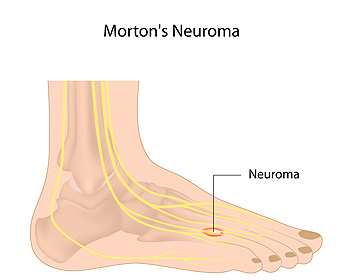
Morton's neuroma is a painful condition that affects the nerves above the third and fourth metatarsals of the foot and leads to discomfort and mobility issues. Treatment approaches of Morton's neuroma vary depending on the severity of the symptoms. Non-surgical treatment includes wearing custom insoles prescribed by a podiatrist to specifically address the pain generated in the ball of the foot. These insoles can offer tailored support, alter foot mechanics, and absorb shock. They also provide targeted relief and improved gait, making them a valuable option for those seeking comfort and mobility. Further, orthotic devices can support the arch of the foot and correct other biomechanical issues. In more severe cases, advanced treatment options are available. Steroid injections may offer relief for up to five years in some cases, although results can vary. Surgical interventions, such as nerve removal surgery, are considered when other treatments are ineffective or when a noticeable growth is present. Timely management can help to prevent Morton's neuroma from getting worse, eventually becoming a chronic issue. If you are experiencing symptoms, it is suggested that you make an appointment with a podiatrist to determine what the best treatment plan is for you.
Morton’s neuroma is a very uncomfortable condition to live with. If you think you have Morton’s neuroma, contact our podiatrists of CNY Foot Surgery & Podiatry Care. Our doctors will attend to all of your foot care needs and answer any of your related questions.
Morton’s Neuroma
Morton's neuroma is a painful foot condition that commonly affects the areas between the second and third or third and fourth toe, although other areas of the foot are also susceptible. Morton’s neuroma is caused by an inflamed nerve in the foot that is being squeezed and aggravated by surrounding bones.
What Increases the Chances of Having Morton’s Neuroma?
- Ill-fitting high heels or shoes that add pressure to the toe or foot
- Jogging, running or any sport that involves constant impact to the foot
- Flat feet, bunions, and any other foot deformities
Morton’s neuroma is a very treatable condition. Orthotics and shoe inserts can often be used to alleviate the pain on the forefront of the feet. In more severe cases, corticosteroids can also be prescribed. In order to figure out the best treatment for your neuroma, it’s recommended to seek the care of a podiatrist who can diagnose your condition and provide different treatment options.
If you have any questions, please feel free to contact our office located in East Syracuse, NY . We offer the newest diagnostic and treatment technologies for all your foot care needs.
When the Achilles Tendon Becomes Strained

The Achilles tendon, a robust band of tissue connecting the calf muscles to the heel bone, plays a pivotal role in our ability to walk, run, and jump. However, this vital structure is not invincible. Achilles tendon injuries can be painful and debilitating. They often result from overuse, sudden changes in physical activity, or inadequate warm-up routines. Strains, characterized by mild to severe discomfort, may be a sign of overexertion or minor tears in the tendon. In contrast, a complete rupture, often accompanied by a sudden, sharp pain and a popping sensation, is a more severe injury requiring immediate medical attention. The road to recovery varies depending on the injury's extent, with treatments ranging from rest for minor strains to surgical intervention for more severe cases. If you experience an Achilles tendon injury, it is strongly suggested that you schedule an appointment with a podiatrist who can determine what the correct treatment is for you.
Achilles tendon injuries need immediate attention to avoid future complications. If you have any concerns, contact our podiatrists of CNY Foot Surgery & Podiatry Care. Our doctors can provide the care you need to keep you pain-free and on your feet.
What Is the Achilles Tendon?
The Achilles tendon is a tendon that connects the lower leg muscles and calf to the heel of the foot. It is the strongest tendon in the human body and is essential for making movement possible. Because this tendon is such an integral part of the body, any injuries to it can create immense difficulties and should immediately be presented to a doctor.
What Are the Symptoms of an Achilles Tendon Injury?
There are various types of injuries that can affect the Achilles tendon. The two most common injuries are Achilles tendinitis and ruptures of the tendon.
Achilles Tendinitis Symptoms
- Inflammation
- Dull to severe pain
- Increased blood flow to the tendon
- Thickening of the tendon
Rupture Symptoms
- Extreme pain and swelling in the foot
- Total immobility
Treatment and Prevention
Achilles tendon injuries are diagnosed by a thorough physical evaluation, which can include an MRI. Treatment involves rest, physical therapy, and in some cases, surgery. However, various preventative measures can be taken to avoid these injuries, such as:
- Thorough stretching of the tendon before and after exercise
- Strengthening exercises like calf raises, squats, leg curls, leg extensions, leg raises, lunges, and leg presses
If you have any questions please feel free to contact our office located in East Syracuse, NY . We offer the newest diagnostic tools and technology to treat your foot and ankle needs.
The Causes, Types, and Treatments of Achilles Tendon Injuries
Tendons are fibrous tissues that connect muscles with bone. The Achilles tendon is the largest tendon in the body. It connects the calf muscles at the back of the leg with the heel, and facilitates movements such as jumping, running, and walking.
Because the Achilles tendon is engaged so frequently and bears a great deal of pressure and stress throughout the day, it can become injured. Achilles tendon injuries cause the tissue to become irritated, inflamed, and swollen. Pain can come on gradually or be immediate, and will vary from mild to severe depending upon the injury. Where the pain occurs will vary as well, from just above the heel up through the back of the leg. There may also be stiffness in the tendon.
Achilles tendon injuries can often be caused by repetitive stress. They may also occur while running, playing tennis, gymnastics, football, basketball, dancing, soccer, baseball or other sports that require speeding up, slowing down, or pivoting quickly. Wearing high heels, falling from an elevation, stepping in a hole, having flat feet, bone spurs, tight leg muscles or tendons, wearing improper athletic shoes, exercising on uneven surfaces, or starting a new type of exercise can also cause Achilles tendon injuries.
The two most common Achilles tendon injuries are tendonitis and ruptures. Tendonitis causes painful inflammation and can occur in different parts of the tendon. Non-insertional Achilles tendonitis occurs when the fibers in middle of the tendon begin to break down, thicken, and swell. This condition typically affects younger, more active adults. Insertional Achilles tendonitis occurs where the tendon inserts into the heel bone. It is common for bone spurs to form with this type of injury. This condition can affect people of any age and level of activity.
Achilles tendon ruptures are a tear in the tendon. These breaks may be partial or complete. There may be an audible popping noise at the moment of injury and the pain will be sudden and severe.
An Achilles tendon injury can be diagnosed by your podiatrist after they examine you, check your range of motion, and possibly perform a calf squeeze test or review an X-ray or MRI. Depending on the type and severity of your injury, your podiatrist may treat your condition with rest/ice/compression/elevation (RICE), nonsteroidal anti-inflammatory medications, heel lifts, and stretching and strengthening exercises. If you have torn your Achilles tendon, treatment may include physical therapy, ultrasound, shockwave therapy, or possibly even surgery.
Trench Foot

Trench foot, also known as immersion foot syndrome, is a serious condition resulting from prolonged exposure of the feet to moisture. It damages the circulation and nerve function in the feet. Its history goes back to World War I when soldiers in cold, wet trenches suffered from it due to wearing inadequate footwear. The symptoms of trench foot include blisters, blotchy skin, redness, and possibly tissue loss. It can also cause sensations such as coldness, numbness, and persistent itching. Trench foot is primarily caused by wet feet that do not dry properly, with temperatures that are 30˚F to 40˚F being most conducive. Early treatment is essential, and, if left untreated, trench foot can lead to severe complications such as amputations, gangrene, and permanent nerve damage. Diagnosis involves a physical examination by a doctor to assess injuries, tissue loss, and circulation. Treatment mainly consists of rest, elevation, pain medications, and keeping the feet clean and dry. Prevention includes keeping feet dry, having spare socks and shoes on hand, and airing out feet after wearing socks and shoes, even if they do not appear wet. If you have sustained prolonged exposure of your feet to moisture and have symptoms that are worsening, it is strongly suggested that you make an appointment with a podiatrist as soon as possible for a proper diagnosis and treatment.
Foot Pain
Foot pain can be extremely painful and debilitating. If you have a foot pain, consult with our podiatrists from CNY Foot Surgery & Podiatry Care. Our doctors will assess your condition and provide you with quality foot and ankle treatment.
Causes
Foot pain is a very broad condition that could be caused by one or more ailments. The most common include:
- Bunions
- Hammertoes
- Plantar Fasciitis
- Bone Spurs
- Corns
- Tarsal Tunnel Syndrome
- Ingrown Toenails
- Arthritis (such as Gout, Rheumatoid, and Osteoarthritis)
- Flat Feet
- Injury (from stress fractures, broken toe, foot, ankle, Achilles tendon ruptures, and sprains)
- And more
Diagnosis
To figure out the cause of foot pain, podiatrists utilize several different methods. This can range from simple visual inspections and sensation tests to X-rays and MRI scans. Prior medical history, family medical history, and any recent physical traumatic events will all be taken into consideration for a proper diagnosis.
Treatment
Treatment depends upon the cause of the foot pain. Whether it is resting, staying off the foot, or having surgery; podiatrists have a number of treatment options available for foot pain.
If you have any questions, please feel free to contact our office located in East Syracuse, NY . We offer the newest diagnostic and treatment technologies for all your foot care needs.
Causes of Running Injuries

Running is thought to be a good way to stay fit and healthy, but it also comes with risks. Foot and ankle injuries are all too common among runners. Overuse is a prevalent issue, usually stemming from pushing your body too hard or increasing your mileage too quickly. These actions can lead to problems like plantar fasciitis, Achilles tendonitis, and stress fractures. Poor footwear choices also play a significant role in causing foot or ankle injuries. Worn-out or ill-fitting shoes fail to provide the necessary support and cushioning, increasing the risk of injuries. Ensuring your shoes are the right fit for your feet and running style is important. Inadequate warm-up routines can strain the muscles and ligaments, making them more susceptible to injuries. In addition, running on uneven terrain can increase the likelihood of twisting an ankle. Biomechanical issues, such as overpronation or supination, can place extra stress on your feet and ankles, making them prone to injury. If you experience persistent pain or discomfort as a result of your running activity, it is suggested that you consult a podiatrist for an exam, diagnosis, and treatment options.
All runners should take extra precaution when trying to avoid injury. If you have any concerns about your feet, contact our podiatrists of CNY Foot Surgery & Podiatry Care. Our doctors will treat your foot and ankle needs.
How to Prevent Running Injuries
There are a lot of mistakes a runner can make prior to a workout that can induce injury. A lot of athletes tend to overstretch before running, instead of saving those workouts for a post-run routine. Deep lunges and hand-to-toe hamstring pulls should be performed after a workout instead of during a warmup. Another common mistake is jumping into an intense routine before your body is physically prepared for it. You should try to ease your way into long-distance running instead of forcing yourself to rush into it.
More Tips for Preventing Injury
- Incorporate Strength Training into Workouts - This will help improve the body’s overall athleticism
- Improve and Maintain Your Flexibility – Stretching everyday will help improve overall performance
- “Warm Up” Before Running and “Cool Down” Afterward – A warm up of 5-10 minutes helps get rid of lactic acid in the muscles and prevents delayed muscle soreness
- Cross-Training is Crucial
- Wear Proper Running Shoes
- Have a Formal Gait Analysis – Poor biomechanics can easily cause injury
If you have any questions, please feel free to contact our office located in East Syracuse, NY . We offer the newest diagnostic and treatment technologies for all your foot care needs.
Treatment and Recovery for Broken Ankles
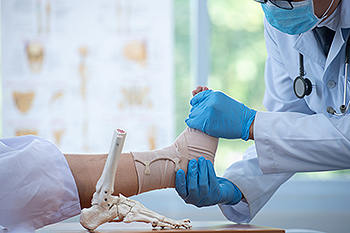
Dealing with a broken ankle can be both painful and challenging. The first step is to seek medical attention for diagnosis through an X-ray. The treatment approach will depend on the severity of the fracture. Treatment options include using a specialized boot or a plaster cast to stabilize the ankle, possible bone manipulation under anesthesia, or even surgical intervention. Regular follow-up appointments are essential to monitor healing progress. Once diagnosed and treated, the recovery process begins. Healing typically takes 6 to 8 weeks or longer, depending on the severity of the break. Specific post-treatment instructions include how long the boot or cast will be needed and guidelines for weight-bearing. Gradual ankle movement and prescribed exercises may be recommended to prevent stiffness. Other recovery tips include resting and elevating the ankle, taking prescribed pain relievers, and being cautious about weight bearing. Gently moving your toes and bending your knee to prevent muscle stiffness is thought to be helpful. For help in dealing with a fractured ankle, it is suggested that you make an appointment with a podiatrist.
Broken ankles need immediate treatment. If you are seeking treatment, contact our podiatrists from CNY Foot Surgery & Podiatry Care. Our doctors can provide the care you need to keep you pain-free and on your feet.
Broken Ankles
A broken ankle is experienced when a person fractures their tibia or fibula in the lower leg and ankle area. Both of these bones are attached at the bottom of the leg and combine to form what we know to be our ankle.
When a physician is referring to a break of the ankle, he or she is usually referring to a break in the area where the tibia and fibula are joined to create our ankle joint. Ankles are more prone to fractures because the ankle is an area that suffers a lot of pressure and stress. There are some obvious signs when a person experiences a fractured ankle, and the following symptoms may be present.
Symptoms of a Fractured Ankle
- Excessive pain when the area is touched or when any pressure is placed on the ankle
- Swelling around the area
- Bruising of the area
- Area appears to be deformed
If you suspect an ankle fracture, it is recommended to seek treatment as soon as possible. The sooner you have your podiatrist diagnose the fracture, the quicker you’ll be on the way towards recovery.
If you have any questions, please feel free to contact our office located in East Syracuse, NY . We offer the newest diagnostic and treatment technologies for all your foot care needs.
All About Broken Ankle
Broken ankles or “ankle fractures” are injuries that occur when the bones that make up the ankle joint are broken. Ankle injuries are some of the most common bone and joint injuries. The ankle joint is made up of three bones that join. The tibia is the main bone, and it makes up the inside of the anklebone. The fibula is a smaller bone, and it makes up the outside of the anklebone. A membrane called the joint capsule is lined with a layer called the synovium, which covers the entire joint. The synovium produces synovial fluid which allows for the joint surfaces to move.
An ankle becomes broken when the joint is stressed beyond the strength of its limits. When an ankle is fractured, ligaments may also tear at the same time. Fractures often occur to the ankle rolling or twisting in an unusual way. At times, a fracture may even be caused by an extreme force applied to the joint.
Symptoms of a broken ankle include pain, swelling, bruising, discoloration, numbness, and an inability to move the toes. If you have a broken ankle, you may also hear something tear or snap when you initially suffered the injury. If you have pain from a broken ankle, beware that the pain will not always come from the exact area of the fracture; you may also experience pain from associated foot fractures. The swelling you may experience can suggest that soft tissue damage may have occurred due to the injury.
There are differences between an ankle fracture and an ankle sprain. The difference is that a fracture or break in the bone is required to classify an injury as a broken ankle. An ankle sprain occurs when there is a tear or disruption of ligaments in the ankle. In some cases, the prognosis of an ankle sprain may be worse than that of a fracture.
X-rays are the most common way to diagnose a broken ankle. X-rays show if the ankle is broken and where exactly the fracture is located. It will also show how many pieces of broken bone there are. A second method of testing to see if an ankle is broken is a stress test. To do this, the doctor will put pressure on the ankle and perform a stress test to determine if the fracture requires surgery. Other methods for diagnosis include CT scans and MRI scans.
If you are suffering from a broken ankle, consult with your podiatrist immediately to receive a proper diagnosis and treatment.
Exploring the Various Types of Foot Orthotics
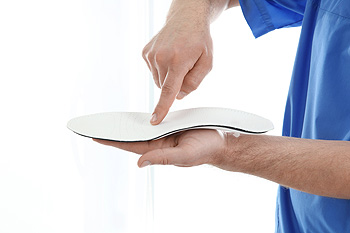
When it comes to promoting optimal foot health and addressing a range of foot-related issues, foot orthotics emerge as a versatile solution. These discreet and personalized devices cater to a variety of needs, with each type serving a unique purpose. Arch supports can offer relief for individuals with fallen arches or over-pronation, and can be successful in correcting alignment and distributing pressure evenly. Heel cups and cushions can help to alleviate heel pain by absorbing shock and reducing impact during movement. Sports enthusiasts often turn to specialized sports orthotics that may enhance performance and minimize discomfort by offering tailored support during athletic activities. For those seeking comfort in everyday life, cushioned insoles provide an extra layer of padding to reduce strain and fatigue. With an array of foot orthotics available, finding the perfect fit for your specific needs has never been more accessible. If you are interested in learning about what type of foot orthotic is right for you, it is suggested that you contact a podiatrist who can provide you with correct information.
If you are having discomfort in your feet and would like to try orthotics, contact our podiatrists from CNY Foot Surgery & Podiatry Care. Our doctors can provide the care you need to keep you pain-free and on your feet.
What Are Orthotics?
Orthotics are inserts you can place into your shoes to help with a variety of foot problems such as flat feet or foot pain. Orthotics provide relief and comfort for minor foot and heel pain but can’t correct serious biomechanical problems in your feet.
Over-the-Counter Inserts
Orthotics come in a wide variety of over-the-counter inserts that are used to treat foot pain, heel pain, and minor problems. For example, arch supports can be inserted into your shoes to help correct overarched or flat feet, while gel insoles are often used because they provide comfort and relief from foot and heel pain by alleviating pressure.
Prescription Orthotics
If over-the-counter inserts don’t work for you or if you have a more severe foot concern, it is possible to have your podiatrist prescribe custom orthotics. These high-quality inserts are designed to treat problems such as abnormal motion, plantar fasciitis, and severe forms of heel pain. They can even be used to help patients suffering from diabetes by treating foot ulcers and painful calluses and are usually molded to your feet individually, which allows them to provide full support and comfort.
If you are experiencing minor to severe foot or heel pain, it’s recommended to speak with your podiatrist about the possibilities of using orthotics. A podiatrist can determine which type of orthotic is right for you and allow you to take the first steps towards being pain-free.
If you have any questions please contact our office located in East Syracuse, NY . We offer the newest diagnostic and treatment technologies for all your foot and ankle needs.
Foot Orthotics
Orthotics are shoe inserts that are meant to correct an irregular walking gait or provide cushioning to the feet. Orthotics come in a variety of different models and sizes, including over-the-counter and customizable variants. Customizable orthotics can be shaped and contoured to fit inside a specific shoe and are typically prescribed through a podiatrist who specializes in customized footwear and orthotics design and management.
Orthotics are beneficial because they can help prevent injuries from occurring and provide cushioning to keep pain levels down to a minimum. They also allow for the correct positioning of the feet. Orthotics can act as shock absorbers to help remove pressure from the foot and ankle. Therefore, orthotics can make bodily movements, such as walking and running, become more comfortable as well as help prevent the development of certain foot conditions.
Orthotics alleviate pain and make the foot more comfortable by slightly altering the angle at which the foot strikes the ground surface, therefore controlling the movement of the foot and ankle. Orthotics come in different variants and can be made of various materials. To determine what type of orthotic is most suited to your feet and your needs, it is best to consult your podiatrist. He or she will be able to recommend a type of orthotic that can help improve your foot function or prescribe a custom orthotic to best fit your feet.




